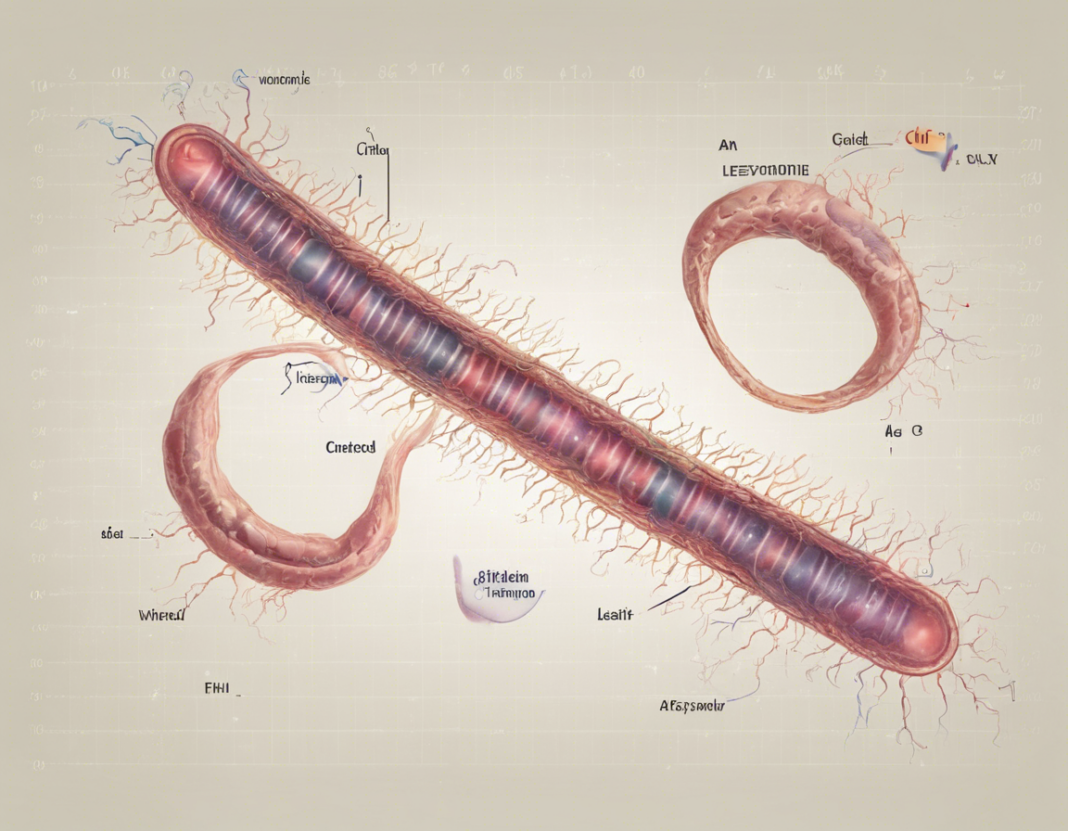Introduction:
Telocentric chromosomes are a type of linear chromosome with one end centromere where the telomeres are located. They are found in many organisms, including plants, animals, and humans. Understanding the structure and function of telocentric chromosomes is vital for comprehending the basics of genetics, evolution, and various genetic disorders. In this article, we will delve deep into the world of telocentric chromosomes, discussing their structure, function, evolution, and significance in genetic research.
Structure of Telocentric Chromosomes:
Telocentric chromosomes possess a distinct structure compared to metacentric or acrocentric chromosomes. Their unique feature is that the centromere is located at one end, leading to the formation of long arms and a single short arm. This configuration can impact the behavior of chromosomes during cell division and genetic recombination.
Function of Telocentric Chromosomes:
Telocentric chromosomes play crucial roles in various genetic processes. They are involved in segregation during cell division, ensuring that each daughter cell receives the correct number of chromosomes. Telocentric chromosomes also participate in genetic recombination, where genetic material is exchanged between homologous chromosomes, contributing to genetic diversity.
Evolution of Telocentric Chromosomes:
The evolution of telocentric chromosomes is a fascinating area of study. Telocentric chromosomes can arise through chromosomal rearrangements such as inversions or translocations. These rearrangements can alter the structure of chromosomes, leading to the formation of telocentric chromosomes from metacentric or acrocentric chromosomes. Understanding the evolutionary origins of telocentric chromosomes provides insights into the diversification of species and genetic stability.
Significance of Telocentric Chromosomes in Genetic Research:
Telocentric chromosomes have significant implications in genetic research. They are used as markers in genetic mapping and cytogenetic studies to identify specific regions of chromosomes. Telocentric chromosomes are also associated with certain genetic disorders, such as Robertsonian translocations, which can lead to syndromes like Down syndrome.
Impact of Telocentric Chromosomes on Evolution:
The presence of telocentric chromosomes can influence the evolutionary trajectory of species. Chromosomal rearrangements involving telocentric chromosomes can lead to the formation of new species through speciation. Changes in chromosome structure, including the emergence of telocentric chromosomes, can drive genetic diversity and adaptation in populations over time.
Applications of Telocentric Chromosomes in Agriculture:
In agriculture, telocentric chromosomes are utilized in crop breeding and genetic improvement. By understanding the genetic makeup of telocentric chromosomes in plants, breeders can develop new crop varieties with desirable traits such as disease resistance, yield potential, and nutritional quality. Telocentric chromosomes serve as valuable tools in advancing agricultural practices for food security and sustainability.
Challenges in Studying Telocentric Chromosomes:
Despite their importance, studying telocentric chromosomes poses challenges due to their unique structure and behavior. The fragility of telocentric chromosomes can make them susceptible to breakage during cell division, leading to genomic instability. Additionally, accurately analyzing telocentric chromosomes requires advanced cytogenetic techniques and molecular tools.
Future Directions in Telocentric Chromosome Research:
As technology advances, researchers are poised to uncover more about telocentric chromosomes and their implications. With high-throughput sequencing and bioinformatics tools, scientists can unravel the genomic architecture of telocentric chromosomes and understand their functional significance in greater detail. Future studies may focus on elucidating the epigenetic regulation of telocentric chromosomes and their role in gene expression.
Frequently Asked Questions (FAQs):
1. What is the difference between telocentric and metacentric chromosomes?
Telocentric chromosomes have the centromere located at one end, resulting in one long arm and one short arm. In contrast, metacentric chromosomes have the centromere positioned closer to the center, leading to two arms of equal length.
2. How do telocentric chromosomes contribute to genetic diversity?
Telocentric chromosomes participate in genetic recombination, where they exchange genetic material with homologous chromosomes. This process leads to the creation of new allele combinations, increasing genetic diversity within populations.
3. Can telocentric chromosomes cause genetic disorders in humans?
Yes, telocentric chromosomes can be associated with genetic disorders, such as Robertsonian translocations, which may result in conditions like Down syndrome. Understanding the structure and behavior of telocentric chromosomes is crucial for diagnosing and managing genetic disorders.
4. How are telocentric chromosomes studied in a laboratory setting?
Telocentric chromosomes are studied using cytogenetic techniques, such as karyotyping and fluorescent in situ hybridization (FISH). These methods allow researchers to visualize and analyze the structure of telocentric chromosomes at the cellular level.
5. Are telocentric chromosomes found in all organisms?
Telocentric chromosomes are present in various organisms, including plants, animals, and humans. Their prevalence and distribution vary among species, reflecting the diverse evolutionary history of chromosomes across the tree of life.
6. What role do telocentric chromosomes play in reproductive isolation between species?
Telocentric chromosomes, especially those resulting from chromosomal rearrangements, can contribute to reproductive isolation between species. Incompatibilities in chromosome structure and genetic material can hinder successful reproduction, leading to speciation.
7. Can telocentric chromosomes be artificially manipulated in genetic engineering?
Telocentric chromosomes can be manipulated in genetic engineering to introduce specific genetic modifications in organisms. Techniques such as CRISPR-Cas9 allow precise editing of telocentric chromosomes, offering potential applications in biotechnology and medical research.
8. How do telocentric chromosomes affect meiotic division in cells?
Telocentric chromosomes can influence meiotic division by impacting chromosome segregation and recombination. Abnormalities in telocentric chromosomes may lead to errors in meiotic cell division, resulting in chromosomal abnormalities in gametes.
9. Are telocentric chromosomes more prone to genetic mutations compared to other types of chromosomes?
Telocentric chromosomes may exhibit increased susceptibility to genetic mutations due to their unique structure and behavior. Factors such as chromosomal fragility and improper segregation during cell division can contribute to the accumulation of mutations in telocentric chromosomes.
10. What are the potential therapeutic implications of studying telocentric chromosomes in genetic disorders?
By understanding the involvement of telocentric chromosomes in genetic disorders, researchers can develop targeted therapies and interventions to address specific chromosomal abnormalities. Studying telocentric chromosomes may lead to the identification of novel treatment strategies for genetic conditions associated with chromosomal rearrangements.

